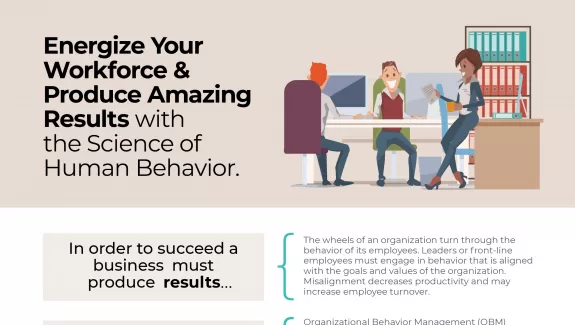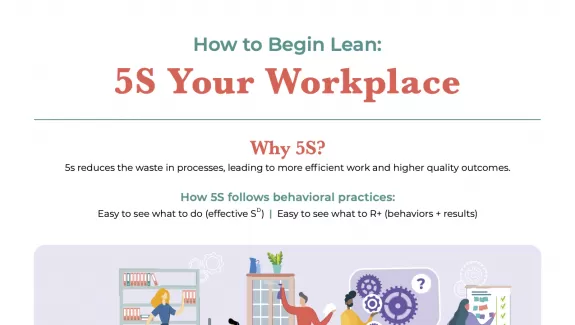
Health and Productivity at Work: Are We Using the Right Metrics?
I recently read a trifold from a fitness company describing the benefits of productivity to office workers. The message was basically this:
“If you are an employer reading this pamphlet, then you, the employer, should buy a membership for your employees with the US.”
…suggesting that when unhealthy workers turn into healthy workers, you can expect an increase in productivity as well.
That got me thinking…are these promises on the front-end (having a healthy workforce) really tied to significant business outcomes such as improved productivity? Many variables contribute to a healthy employee as well as a productive one, but should we combine the two? After all, what is that we are most interested in? A healthy employee? A productive employee? Both?
The internet is full of ways to get 6-pack abs, make the best morning shake, and follow a workout program. We see the hoopla in our Facebook news feeds, Instagram posts, and sponsored Tweets. It is easy to question, without hesitation, the effectiveness of any 7-day health program, or magic a little pill. However, we forgo this skepticism when the promise of health and productivity enters the workplace. It seems too-good-to-be-true. You mean I can get all my work done and get abs by sitting on an exercise ball?
Products are pitched to us with such tag lines:
“This gadget gets you fit in the office, increasing your productivity!”
“The one ‘life-hack’ that you are missing to keep you on track and file that report on time.”
“Improve your productivity by standing at this desk (or sitting in this chair).”
I study sedentary behavior (or too much sitting) in the workplace, and I am starting to wonder, how does engaging in these pro-health behavior changes related to my own productivity? To start, two issues are being discussed at the same time: health and productivity. We can all agree that both are important. Each can be measured, but the change is what we are most interested in. For example, if you used a standing desk, are specific health measures increasing or decreasing? Or as it relates to business, are you more or less productive? But, we need to start with the measurement of each. We can already see how difficult this may be. Before getting into measurement, let’s briefly discuss productivity.
On Productivity…
Productivity. What is it? Generally, how much work you get done every day. It’s a buzz-word that office-jockeys seem to fall in love with. There is a whole sub-culture on being productive. I slipped into it for a while, but now I’m back. A July 2017 Google search of “productivity” yielded 235 million items and over 1,500 research articles that have been published this year alone (with the phrase “worker productivity”)!
Productivity is essential to track because it is often tied to a company’s bottom line. A productivity-loss metric was used to review the effects of Amazon Prime Day on employee productivity (big discounts only for Prime members). The experts calculated that Amazon Prime Day cost employers 10 billion dollars in lost revenue (because employees were shopping online instead of working).
How is productivity defined?
Wikihow defines productivity as "A function of labor productivity." Which in, layman’s terms means the value of work the worker completes in an average hour.
This breaks down into measures of gross domestic product (GDP), total work hours for a country, and so on…I doubt many companies measure their company productivity using their nation’s GDP.
Here lies the first major problem...productivity is a useful metric, but its timescale is very large. You have to gather large data from over a year or more. Typically, when we want to improve productivity, we want to change something TODAY and see its effects relatively soon, not a year or more down the road!
The other elephant room is the fact that we live in a different age. We work in a knowledge economy, no longer producing widgets on an assembly line that can be easily measured with something like the GDP. When we no longer clock-in from 9-5, measuring these productive behaviors can be that much more difficult. How do quantify the creative juices that have to flow when startups are working on app design, or when a company is deciding on a new logo? What do we do?
Measure regular productivity
Because GDP productivity metrics are so far removed from the day-to-day activities of the business, then we need to turn elsewhere: Leading and Lagging Indicators.
Leading Indicators are measures that are taken on a daily basis that inform your business that you are headed in the right direction. Metrics like blogs completed per month, outbound sales calls made per week or even daily sales presentations.
Lagging indicators are measures related to your everyday behavior that are often delayed. Metrics like the number of blog followers, outbound revenue generation, and customer satisfaction.
Depending on the goals of your business, using leading indicators (producing many blogs) may be more important at first than certain lagging indicators (number of likes of Facebook).
With these handy metrics, we can then apply them to health in the workplace.
Moving back to health...the problem and the gap
In general, the effects of behavior change related to health are delayed. Want to lose weight (the right way)? The effects of changing your diet will likely take more than 4 weeks. Want to lift weights and get stronger? The effects of most strength and conditioning programs will probably take at least the same amount of time.
Most of us typically don’t work out or engage in physically taxing work. We spend our days inactive, at a desk (read about the harms here). A whole pop-up industry, to which I am grateful, has emerged, providing healthy solutions for us. However, we need to bridge this gap. Again, common productivity metrics are based on year-long data, but most promises are in the here and now. (“Use this office product and improve your health and productivity today”) Two things need to measured. Productivity change and health behavior change. Both are difficult to measure and behavior change efforts are delayed…But if you were to evaluate productivity and health change, here is what we might do.
A Possible Solution
- Decide on an appropriate productivity metric (lagging/leading indicator) Example: Number of blogs written per week
- Decide on an appropriate health metric Example: Number of reported instances of back pain
- Take baseline data on each metric
- Implement a potential solution Example: For blogs, give feedback. For back pain, try out a standing desk
- Review the solution and see what happens
- After reviewing the data for each, we could evaluate how well each solution correlates with each other. Does standing at a desk reduce instances of reported back pain increase? Did providing feedback on blog output increase the number of blogs written?
Using the Science of Human Behavior
We spend a lot of time at work, so having the opportunity to make choices is important for our work satisfaction. As productivity tools are released and health research refines itself, the conclusions we draw about each need to be objective and based on data. The science of human behavior allows us to critically evaluate which elements in the environment impact our behavior in the workplace, both good and bad.
A new productivity tool may give us that extra edge, but maybe not everything it claims to be. By describing our expectations objectively, and selecting meaningful indicators, we can make informed decisions about how to improve BOTH health and productivity in the workplace.


